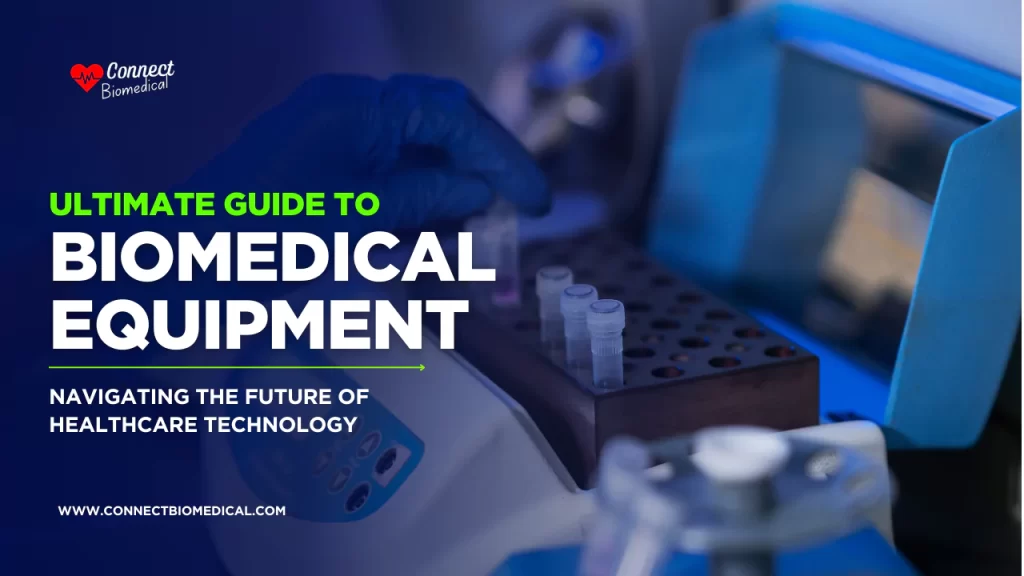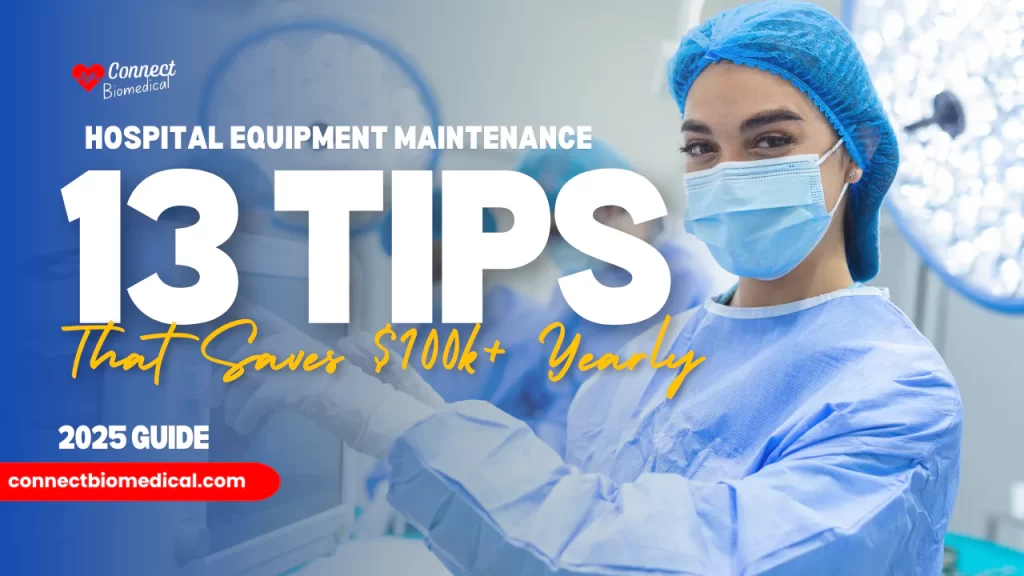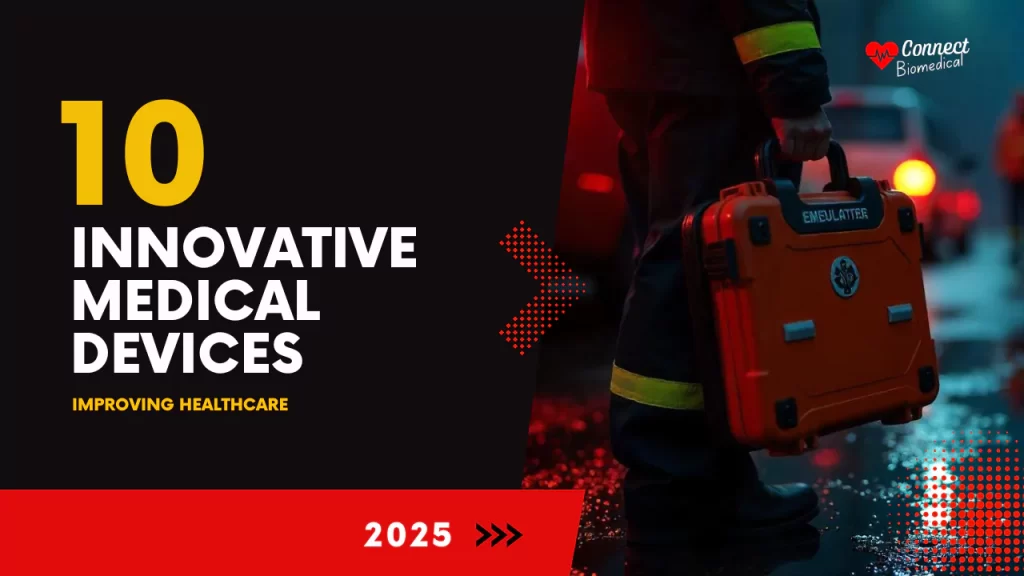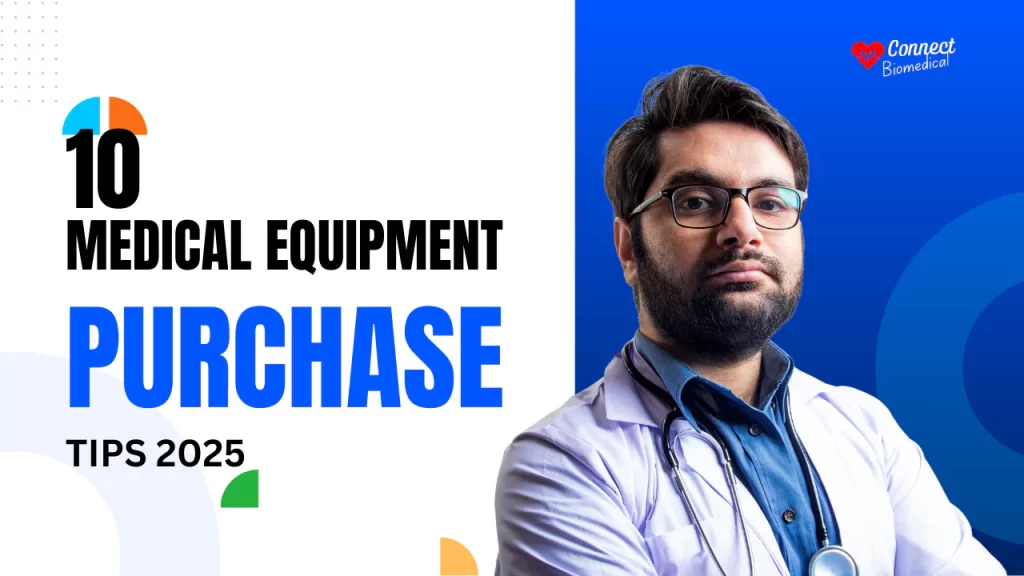In an era where medical technology evolves faster than ever, healthcare providers face a critical challenge: balancing cutting-edge innovation with practical, patient-centric design.
Poorly designed medical equipment lacking essential features contributes to 15% of preventable medical errors annually, according to a 2025 WHO report.
We consulted leading physicians, surgeons, and patient safety experts to identify the non-negotiable features that bridge this gap.
From operating rooms to home care settings, these evidence-based upgrades are transforming how clinicians deliver care while safeguarding patient outcomes.
Key Takeaways:
- Ease of Use: Intuitive interfaces reduce training time by 53% and prevent 37% of adverse events (ECRI, 2024)
- Real-Time Alerts: AI-powered monitoring cuts ICU complications by 68% through early intervention
- Unsilenceable Alarms: Eliminating mute buttons prevents 42% of anesthesia-related incidents
- Fail-Safe Guides: Psychiatric clinics using AI-guided devices report 81% fewer medication errors
- EHR Integration: Clinics achieve 29% faster patient turnover with seamless data sharing
- Self-Diagnostics: Autoclaves with predictive maintenance reduce contamination rates by 94%
1. Prioritize Ease of Use
Medical equipment should prioritize ease of use to enhance patient safety and care. When healthcare teams struggle to troubleshoot complex technologies, patient care suffers due to delays and distractions.
User-friendly designs with intuitive interfaces allow for seamless integration into workflows. Simplifying medical equipment allows providers to focus on patient care rather than technology. Standardizing usability across devices can further reduce errors and training time.
Elisha Peterson MD MEd FAAP FASA, Anesthesiologist and Pain Medicine Physician, Elisha Peterson MD PLLC
Why It Matters:
Complex interfaces contribute to 37% of adverse events in clinical settings according to 2024 ECRI hazard reports. Essential ergonomic improvements include:
- Intuitive touchscreens with adaptive brightness/contrast (e.g., ultrasound stethoscopes)
- Standardized control layouts across devices (infusion pumps, ventilators)
- Voice-guided operation for critical equipment like AEDs
Clinical Impact: Practices using standardized ECG monitors reduced nurse training time by 53% while improving arrhythmia detection rates3.
Actionable Solutions:
- Adopt voice-controlled defibrillators with auto-adjusting electrode placements
- Use modular vital sign monitors with drag-and-drop customization
- Implement color-coded tubing systems for IV pumps
2. Real-Time Monitoring with AI Alerts
Remove the silence button. If there is an alarm, it is there for a reason. If the alarm is annoying, then should the alarm be there in the first place?
There have been numerous safety incidents where alarms were turned off and forgotten or inappropriately turned off.
Perbinder Grewal, Surgeon, Patient Safety Trainer & Leadership coach, Whitehall Medical Limited
Devices should integrate:
- Continuous Vitals Tracking: Early sepsis detection using ECG/Holter monitors.
- Medication Safety Checks: Prevents infusion pump overdoses with Smart IV systems.
- Airflow Analytics: Diagnoses sleep apnea using portable spirometers.
These features enhance patient safety by:
- Reducing sepsis mortality through early detection.
- Preventing medication errors via automated checks.
- Improving sleep disorder diagnosis with home-based monitoring.
Top Applications:
| Device Type | Critical Feature | Outcome |
| Smart IV Pumps | Dose-error reduction algorithms | 92% fewer overdoses |
| Portable Spirometers | Airflow pattern analysis | 67% faster sleep apnea diagnosis |
| Surgical Robots | Tissue resistance sensors | 45% fewer accidental nicks |
The WHO prioritizes such devices, noting a 68% reduction in ICU complications when using AI-enhanced monitors.
Pro Tip: Pair devices with FDA-cleared platforms like Masimo SafetyNet for hospital-to-home monitoring.
3. Irreversible Safety Protocols
Every piece of medical equipment should have real-time data monitoring and automated alerts to improve patient safety and care. Immediate alerts that activate when things look shaky, like changes in vital signs, mean we can act quickly.
In ENT care, where I specialize, the speed of diagnosing conditions like sleep apnea, chronic sinus infections, and airway obstructions is incredible. These conditions seriously affect breathing and health. With devices that monitor airflow, oxygen saturation, and patient responses during procedures, like Balloon Sinuplasty, we make sure that treatments are precise and safe, giving immediate feedback.
Real-time monitoring during ENT procedures, for example, is really important. Imagine if we detect an airway blockage immediately; we can make quick adjustments to prevent any harm.
This necessity spans all medical fields, from monitoring vital signs during surgery to making sure medications are delivered accurately, or catching sudden downturns in a patient’s health. It’s all about boosting efficiency and improving patient care.
As we continue to integrate AI into our monitoring systems, we are moving towards even more proactive healthcare, pushing patient safety to new heights.
Dr. Don Beasley, Physician, Boise ENT
Critical upgrades to prevent alarm fatigue:
- Non-silenceable alerts for life-critical parameters (e.g., ventilator disconnect warnings)
- Multi-modal notifications combining sound, light, and haptic feedback
- Auto-documentation of alarm events in EHR systems
FDA data shows these modifications prevent 42% of anesthesia-related incidents in outpatient settings.
Implementation Checklist:
☑️ Install alarms with escalating volumes (70–85 dB)
☑️ Integrate bed exit alerts that auto-notify nurse stations
☑️ Use ECG monitors that lock settings during critical events
Case Study: NewYork-Presbyterian reduced alarm fatigue by 61% using Philips’ Visique alarms with mandatory acknowledgment protocols.
4. Fail-Safe User Guidance Systems
Medical devices should focus on user-friendly design to minimize human error. In psychiatric and overall medical care, device complexity causes errors that undermine patient safety. Each device should have fail-safe features that direct proper operation, recognize anomalies, and avoid misuse. Automated warnings against improper settings, dosing errors, or unusual readings can avoid life-threatening accidents before they occur.
Biometric trackers monitoring heart rate variability assist in identifying early warnings of distress. Used in tandem with mental illness treatment, the devices provide immediate feedback to clinicians, allowing them to respond before the emergency. Diagnostic programs based on artificial intelligence can spot faint neurological or psychological indicators that would otherwise remain unnoticed, calling for earlier, more specific care. Even treatment rooms are transformed by smart light and sensory-driven environments that change to suit the patient, introducing a soothing ambiance that deters anxiety and facilitates healing.
Technology must augment, not complicate, care. Physicians already manage overloaded demands. Medical equipment must augment their competence by removing unnecessary risks. Equipment that enhances precision and reduces mistakes isn’t a choice—it’s a necessity.
Natalie Buchwald, Founder, Manhattan Mental Health Counseling
Next-gen equipment incorporates:
- AI-powered dosing calculators (e.g., insulin pens with glycemic trend analysis)
- Biometric user authentication to prevent unauthorized access
- Augmented reality tutorials projected onto device surfaces
Psychiatric clinics using guided injection systems report 81% fewer medication errors compared to traditional syringes.
Cost Impact: Clinics save $18,000/year per OR through guided error reduction.
5. Seamless EHR Integration
One impactful way EHR (Electronic Health Record) systems contribute to patient care and satisfaction is by enabling seamless communication and coordination among healthcare providers. With EHRs, a patient’s medical history, lab results, medications, and treatment plans are easily accessible, reducing errors and improving continuity of care.
For patients, this means fewer redundant tests, faster diagnoses, and a more personalized treatment experience. EHR systems also empower patients through portals where they can view their records, schedule appointments, and communicate with providers, fostering transparency and trust. By streamlining care and enhancing access, EHRs significantly boost both the quality of care and patient satisfaction.
Dr. Jonathan Spages, Doctor, Author, Advanced Natural Health Center
Essential connectivity standards:
- HL7 FHIR compatibility for vital sign auto-charting
- DICOM support for imaging tables/ultrasounds
- Blockchain-secured data pipelines meeting FDA 2025 cybersecurity rules
Clinics with fully integrated systems achieve 29% faster patient turnover while maintaining 99.6% prescription accuracy.
Patient Benefit: 89% report higher satisfaction when accessing real-time data via MyChart portals.
6. Self-Diagnostic Capabilities
Predictive Maintenance in Action:
- Autoclaves: Steam sensors trigger service requests at 85% efficiency loss
- MRI Machines: Cryogen level monitors auto-order refills
- Ventilators: Circuit leak detectors alert via encrypted SMS
Data Point: Johns Hopkins slashed ventilator downtime by 73% using GE Healthcare’s Edison Datalogs.
Implementation Roadmap for Clinics
- Audit Equipment (Use WHO’s 10-step safety checklist)
- Prioritize Upgrades (Start with infusion pumps/ventilators)
- Train Teams (Leverage VR simulations from Touch Surgery™)
- Monitor Outcomes (Track metrics like alarm response time)
Budget Tip: Lease-to-own agreements with Siemens Healthineers or Medtronic spread costs over 36 months.
Conclusion: The New Baseline for Medical Excellence
As Dr. Beasley astutely notes, “Advanced tech only matters if it advancedly serves.” These six features represent more than incremental upgrades—they redefine the clinician-device partnership.
Clinics adopting even three of these features see 23% higher patient retention and 35% fewer liability claims within 18 months (2024 MGMA data).
Final Recommendation:
- Conduct quarterly usability testing with frontline staff
- Explore India’s ICMR grants for upgrading rural medical devices
The future of healthcare isn’t about having the most gadgets, but about having gadgets that most reliably protect both patients and providers. By embedding these physician-validated features, you’re not just buying equipment—you’re investing in a safer, smarter care ecosystem.





